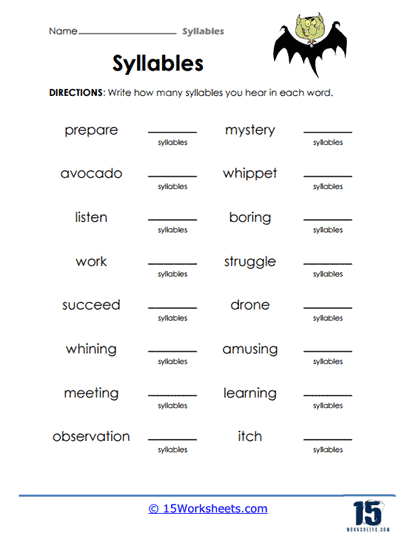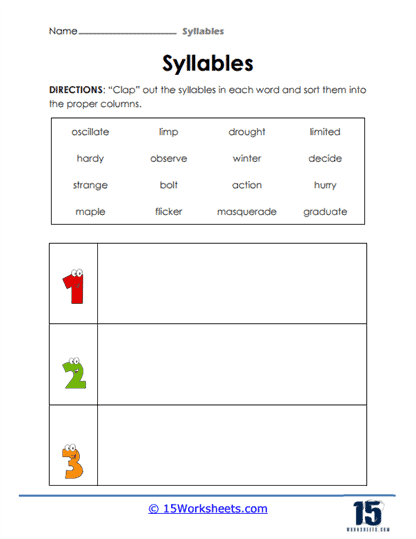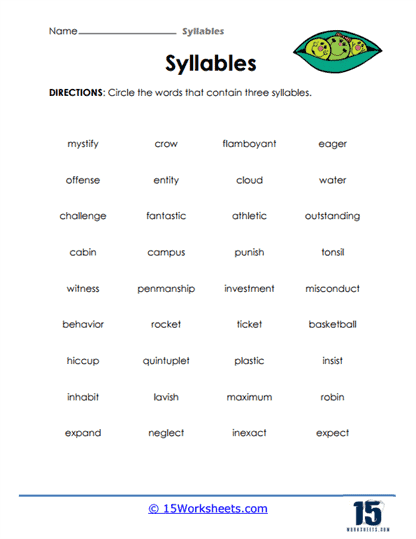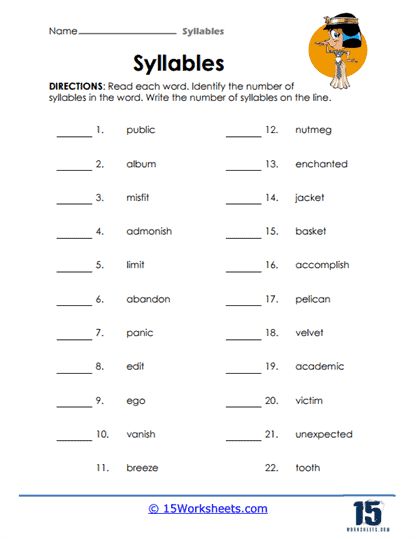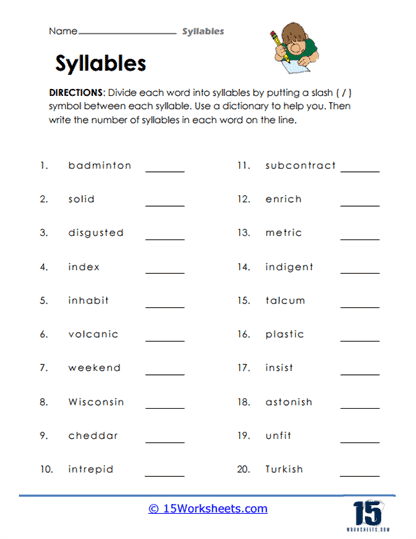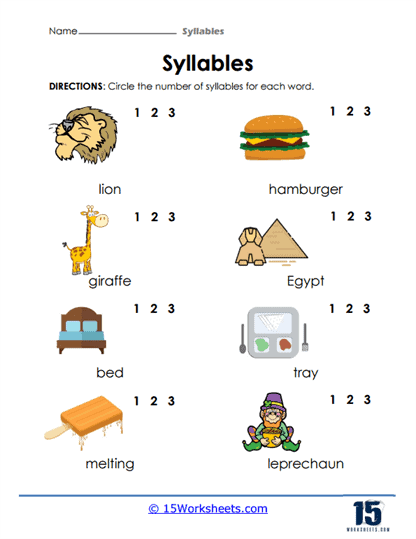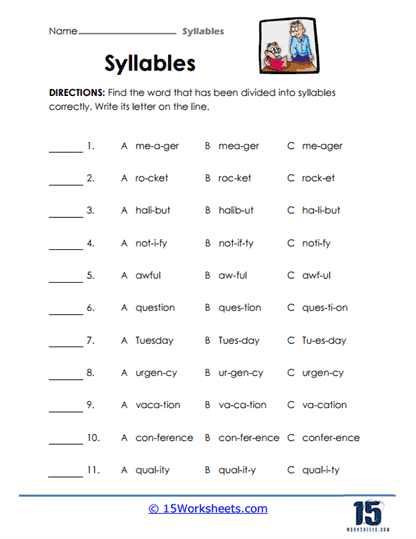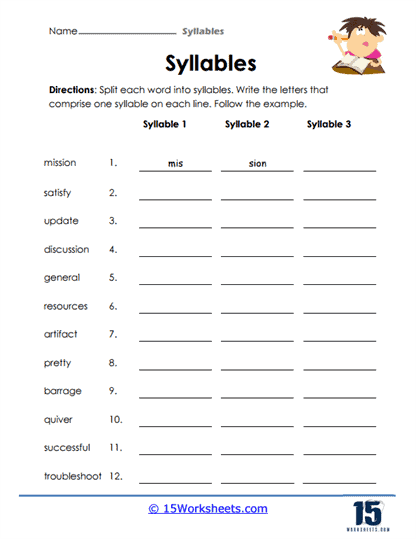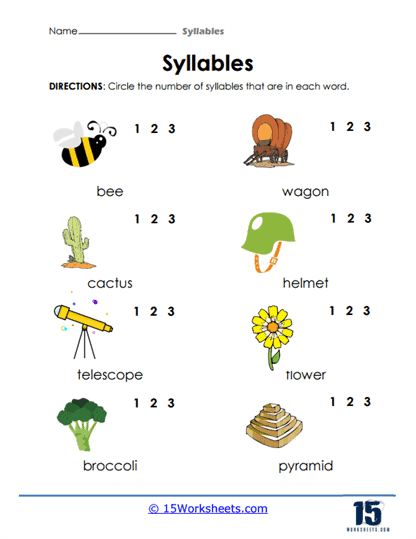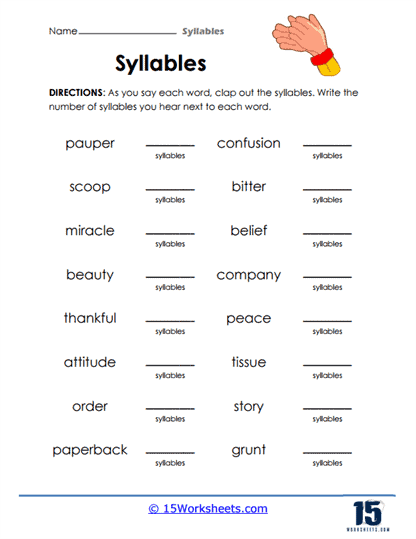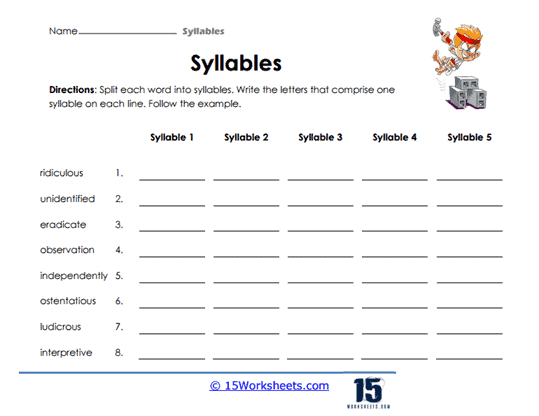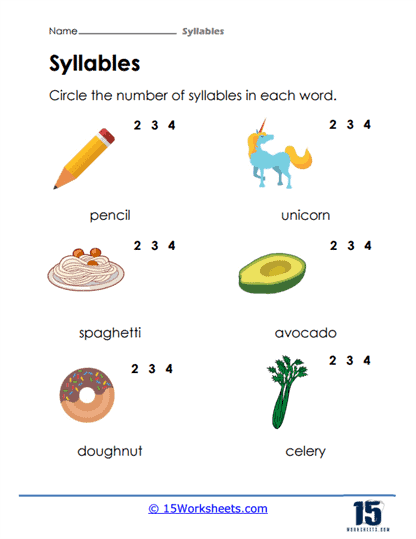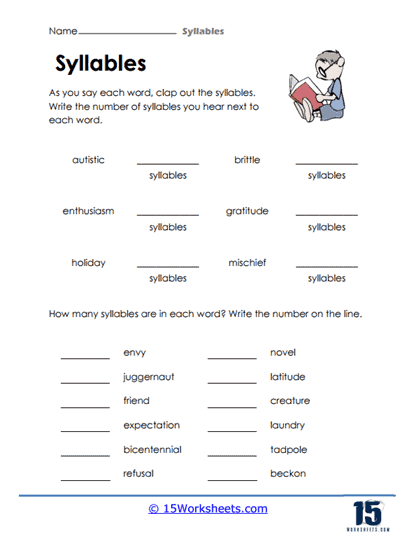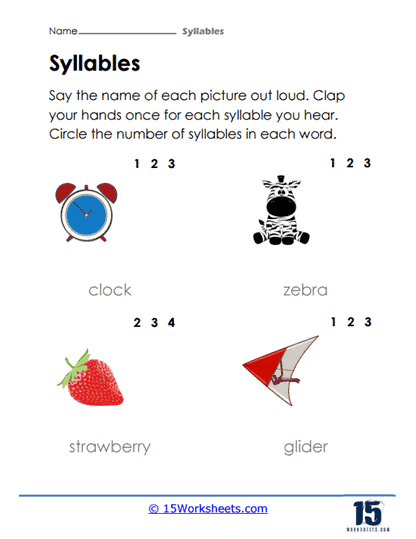Syllables Worksheets
All About These 15 Worksheets
Syllables are the rhythmic units that make up words, providing the structure and melody of language. Understanding and mastering syllables is a fundamental skill in phonics and early literacy. Syllable awareness not only aids in reading and spelling but also enhances overall language development.
To empower students with the ability to dissect and manipulate syllables effectively, we proudly present a collection of Syllables worksheets. These worksheets are thoughtfully designed to provide students with structured and engaging opportunities to practice and refine their understanding of syllables.
What are Syllables Worksheets?
Syllables Worksheets are educational resources designed to help students practice and learn about syllables, which are the units of sound that make up words. These worksheets often include various activities, such as counting, dividing, or combining syllables, that focus on identifying and distinguishing between different syllable patterns in words.
What Are Syllables?
Syllables are units of sound that make up words. A syllable consists of a single vowel sound, with or without surrounding consonants, and is often considered the basic building block of a word. Each syllable contains one vowel sound and may include one or more consonant sounds before or after the vowel.
In English, words can have one or multiple syllables. For example:
One-syllable words – cat, dog, house
Two-syllable words – apple, happy, window
Three-syllable words – elephant, computer, umbrella
How To Teach Counting Syllables To Students
Counting syllables in words is an important skill for developing reading, spelling, and pronunciation abilities. Here are several methods to help you count syllables in words:
Clap Method – Say the word out loud and clap your hands once for each syllable you hear. Each syllable contains a distinct vowel sound, so listen for the changes in the sound as you say the word.
Chin Method – Place your hand under your chin and say the word slowly. Your chin will drop once for each syllable in the word, as it moves when you pronounce a vowel sound.
Finger Method – As you say the word out loud, place a finger on the table for each syllable you hear. This tactile approach can help reinforce the connection between the number of vowel sounds and syllables.
Vowel Counting – Identify the vowels (A, E, I, O, U) in the word and count them. Remember that each syllable has one vowel sound. Be cautious with words that have vowel combinations, such as “boat” or “train,” as they often represent one syllable despite having two vowels.
Dividing the Word – Break the word into smaller chunks or segments, focusing on the vowel sounds. For example, the word “banana” can be divided into “ba-na-na,” which has three syllables.
Use a Dictionary – Many dictionaries indicate the syllable breaks in words using dots or hyphens. If you’re unsure of the number of syllables in a word, consult a dictionary to verify.
Keep in mind that counting syllables is not always straightforward, as certain words may have silent vowels or adjacent vowel sounds that create a single syllable (known as diphthongs). With practice and by employing these methods, you can improve your ability to count syllables in words and enhance your language skills.
The Importance of Syllables
Understanding and mastering syllables is of great significance for several reasons:
- Phonological Awareness: Syllable awareness is a critical component of phonological awareness, which is the ability to recognize and manipulate the sounds and structures of language. Phonological awareness forms the foundation for early literacy skills.
- Reading Proficiency: Syllable recognition is essential for proficient reading. It helps students decode unfamiliar words and enhances reading fluency and comprehension.
- Spelling Competence: Proficiency in recognizing syllables also contributes to improved spelling skills. When students can identify and apply syllable patterns, they are better equipped to spell words correctly.
- Vocabulary Growth: Learning about syllables exposes students to a wider range of words, enriching their vocabulary and comprehension.
This collection of Syllables worksheets is a valuable resource for educators and parents committed to supporting their students’ phonological awareness and literacy development. Proficiency in recognizing and using syllables is a foundational skill that opens doors to reading fluency, comprehension, effective spelling, and vocabulary growth.
By using these engaging worksheets, students will strengthen their ability to recognize and use syllables with confidence. This collection is an investment in their future success, ensuring they have a solid foundation in phonological awareness, phonics, spelling, and vocabulary.

